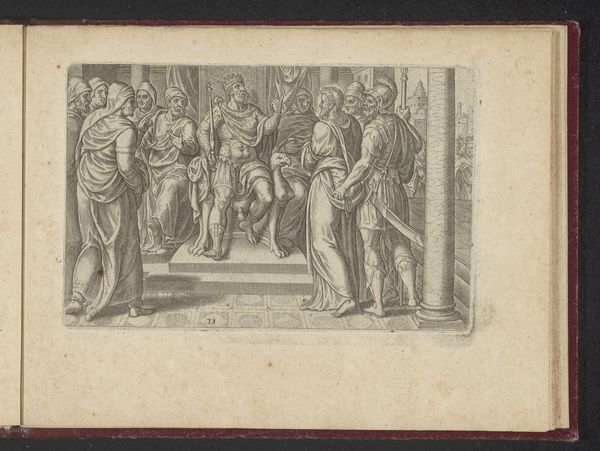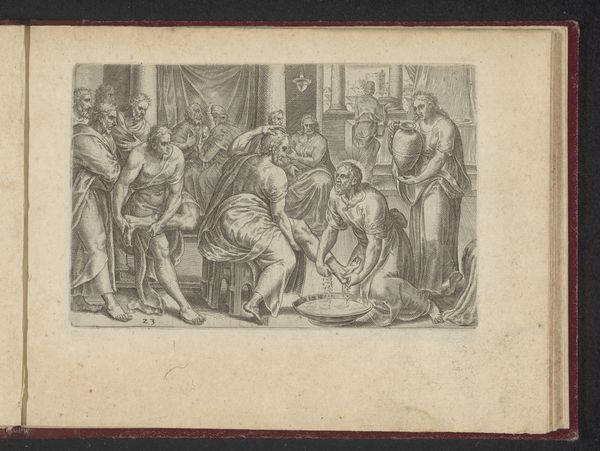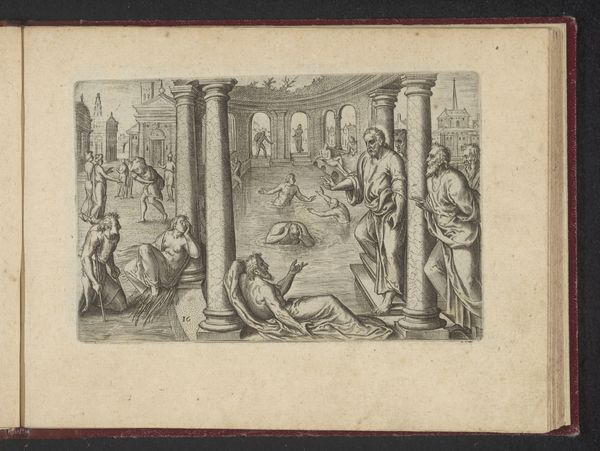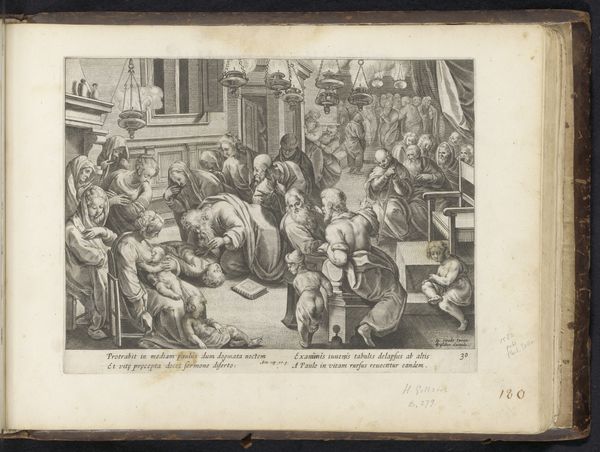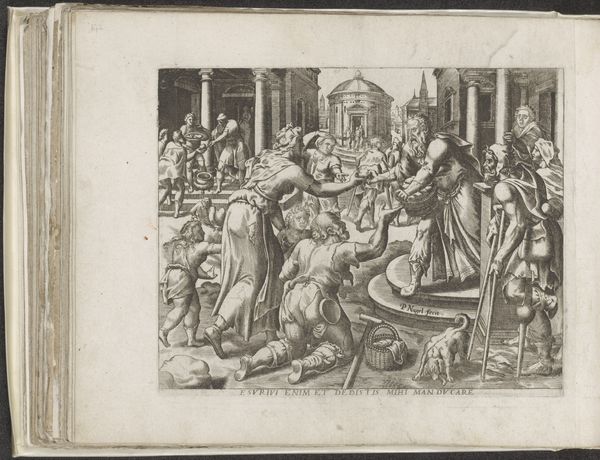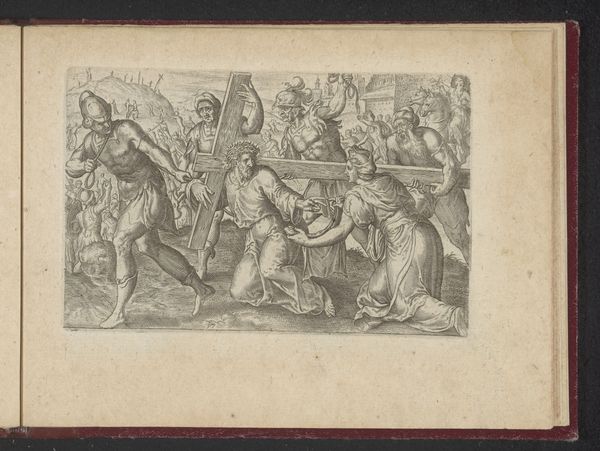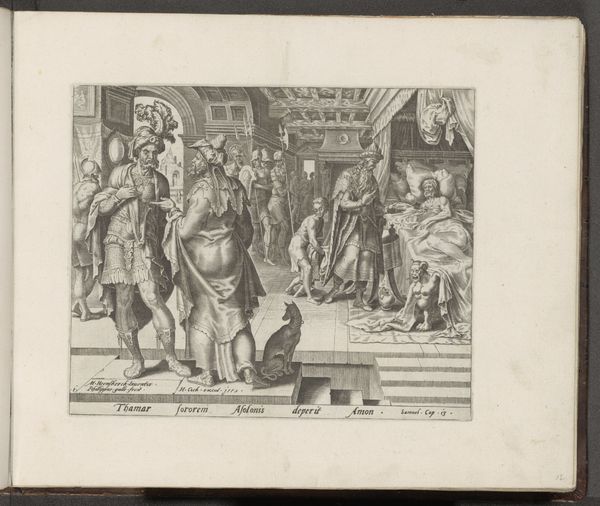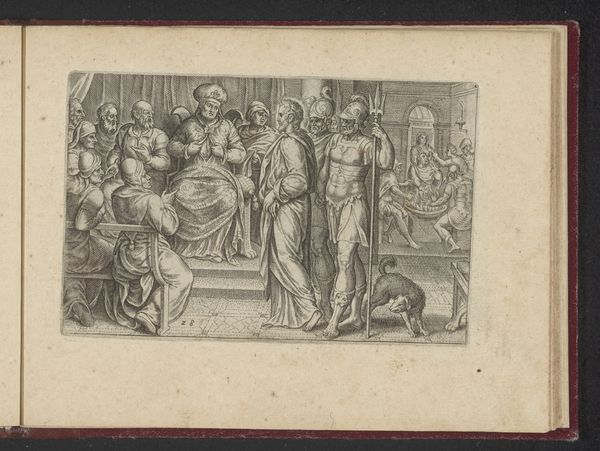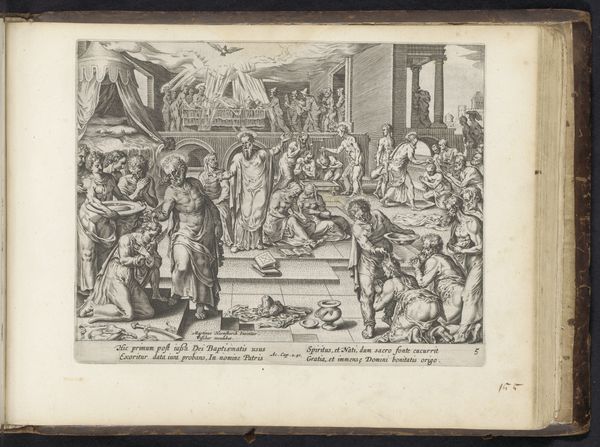
print, engraving
# print
#
mannerism
#
figuration
#
coloured pencil
#
history-painting
#
engraving
Dimensions: height 92 mm, width 139 mm, height 137 mm, width 183 mm
Copyright: Rijks Museum: Open Domain
Editor: This is "Ecce Homo," a 1573 engraving by Philips Galle, housed at the Rijksmuseum. The crowd and architectural detail really strike me, especially the architecture that almost diminishes Christ in scale, almost an afterthought. How do you see this piece fitting into its historical context? Curator: The architectural setting, with its almost theatrical staging, really defines the art of Mannerism and how the public role of art evolved in the late 16th century. Notice how Christ is presented on a raised platform. What kind of message do you think that sends? Editor: It seems like a very performative act, putting someone on display to a jeering crowd. Like he's an actor, in a play of violence. Curator: Exactly! The Council of Trent emphasized the emotional power of religious imagery. Prints like this allowed for wide dissemination of such powerful and, quite frankly, propagandistic images. They become objects of devotion, discussion and vehicles for shaping public sentiment. Does knowing that affect your perception of the work? Editor: It does. The setting, instead of feeling arbitrary, now speaks to the authority presenting Jesus to the crowd. Almost a branding of the story, in a way? Curator: Precisely. Consider too how the act of reproducing it, this print being shared with many, changed the dynamics between beholder and religious imagery. Editor: That gives me a lot to think about, especially in relation to the socio-political environment. I had not seen it like that before, so thank you. Curator: My pleasure. Art’s true power is revealed through history.
Comments
No comments
Be the first to comment and join the conversation on the ultimate creative platform.
